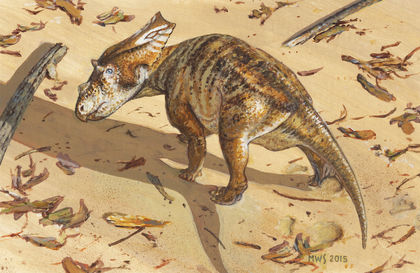For the first time, ever, scientists have a complete skeleton of a baby ceratopsid, says professor Philip Currie from the University of Alberta.
And they’re letting the world know.
Currie and other colleagues have published results of their research in the Journal of Vertebrate Paleontology.
“We’ve only had a few isolated bones before to give us an idea of what these animals should look like as youngsters, but we’ve never had anything to connect all the pieces. All you need is one specimen that ties them all together,” said Currie. “Now we have it!”
Having the complete skeleton of the three-year-old, 1.5-metre long baby Chasmosaurus, an early predecessor of the Triceratops, allows researchers to study how other horned dinosaurs may have developed as they aged.
“We now have an anchor point with the baby that we can compare with all other specimens of this species, and from that comparison can calculate the dimensions, body weights and ages for all other ceratopsid species. We can start filling in missing pieces,” said Currie.
The discovery of the complete juvenile skeleton could also help researchers unlock details of the life history, population structure, growth rates, biomass and physiology of these dinosaurs.
“Unless you’ve got that basic anatomical information, you’re kind of shooting in the dark with all of these other calculations,” said Currie.
“What we’re seeing is something intermediate between ceratopsids and proto-ceratopsids, which are more primitive,” he said. “It gives us a lot more information on what we should expect.”
Currie said the specimen appears to have been three years old when it died, likely drowned when swept away in a river and then buried in mud that preserved it.
It’s going on display in Tokyo after being an exhibit at the U of A and Dinosaur Provincial Park near Brooks.
Agencies/Canadajournal

 Canada Journal – News of the World Articles and videos to bring you the biggest Canadian news stories from across the country every day
Canada Journal – News of the World Articles and videos to bring you the biggest Canadian news stories from across the country every day


Currie said the knowledge gained form the discovery allows scientists to fill in gaps in the evolution of other dinosaurs